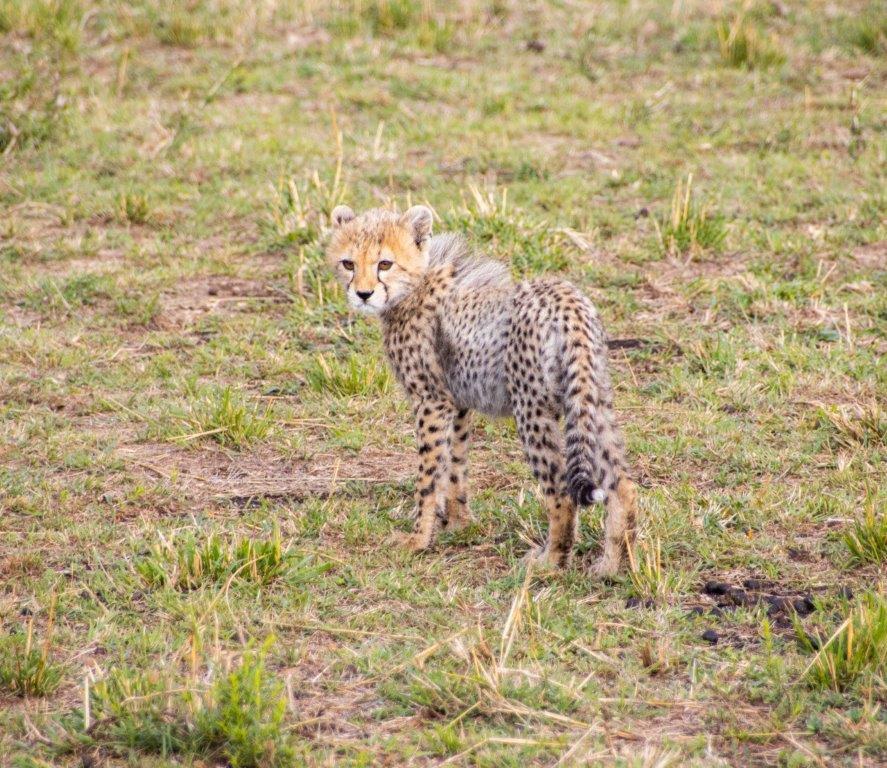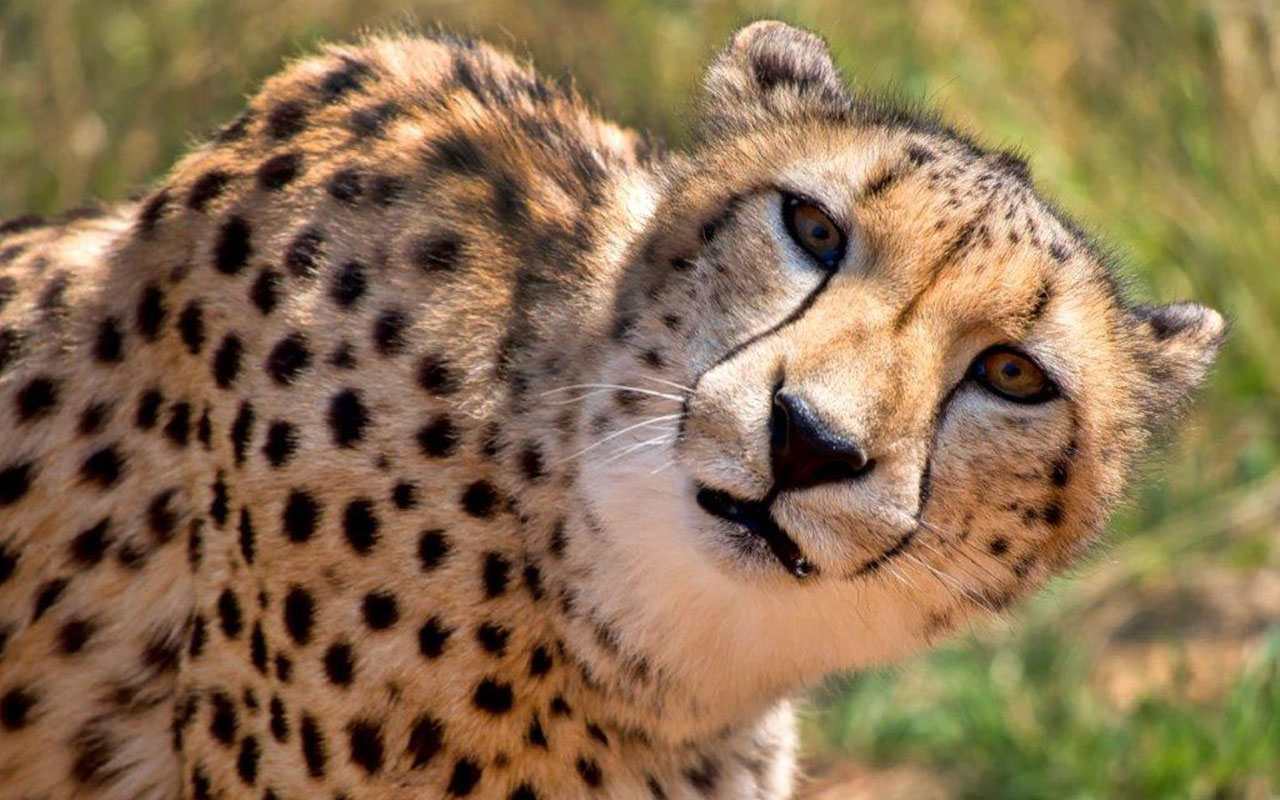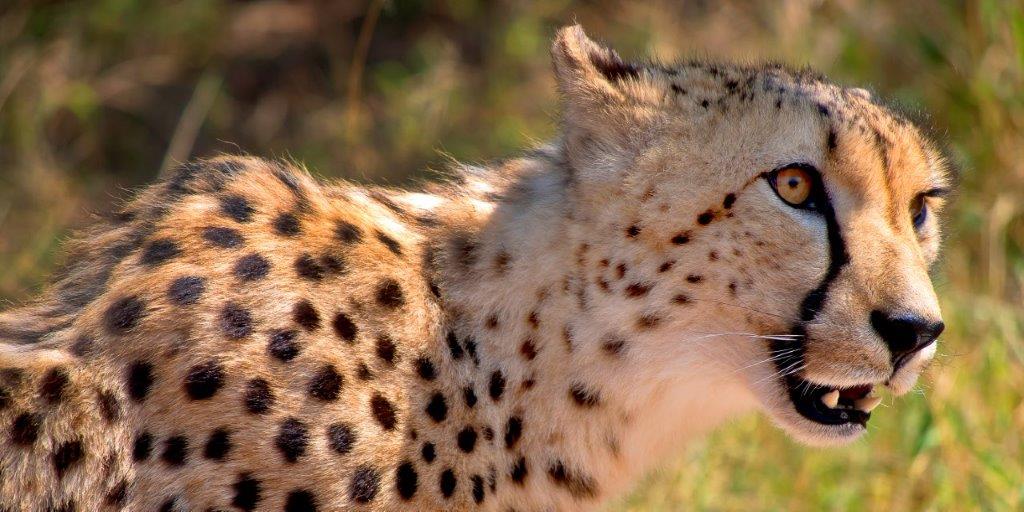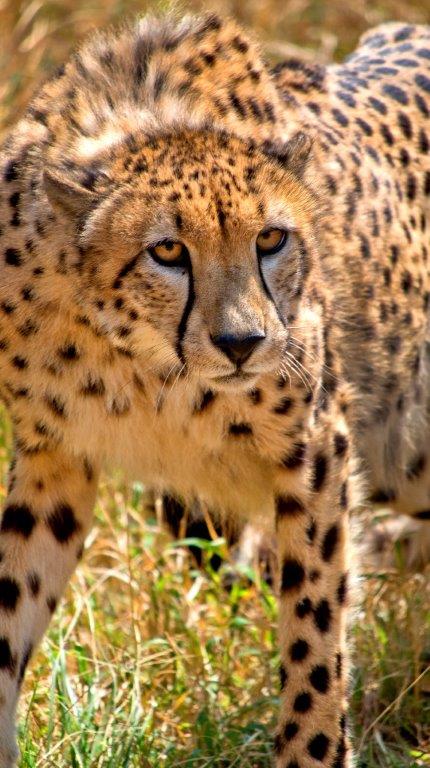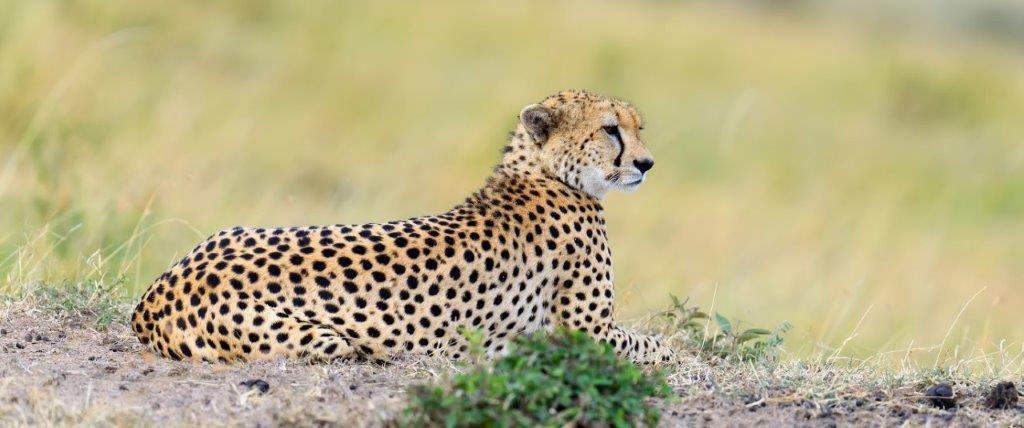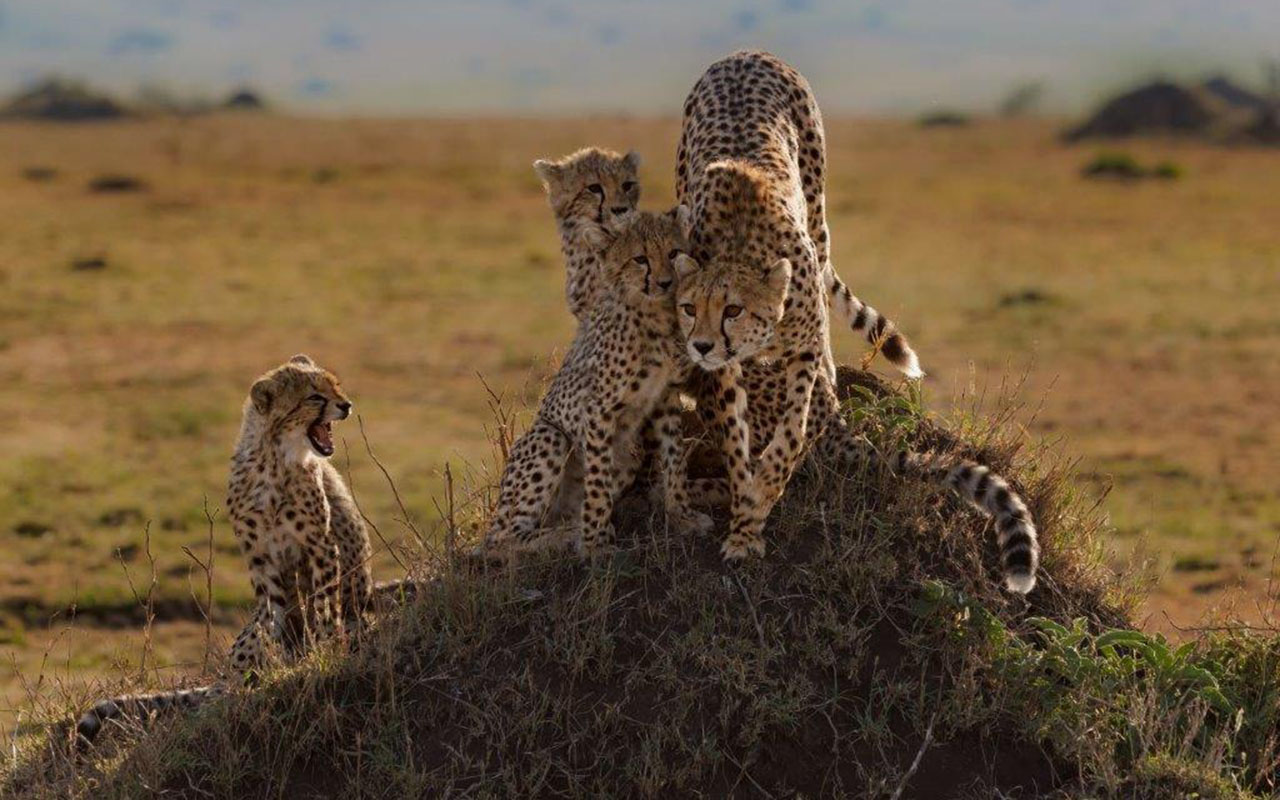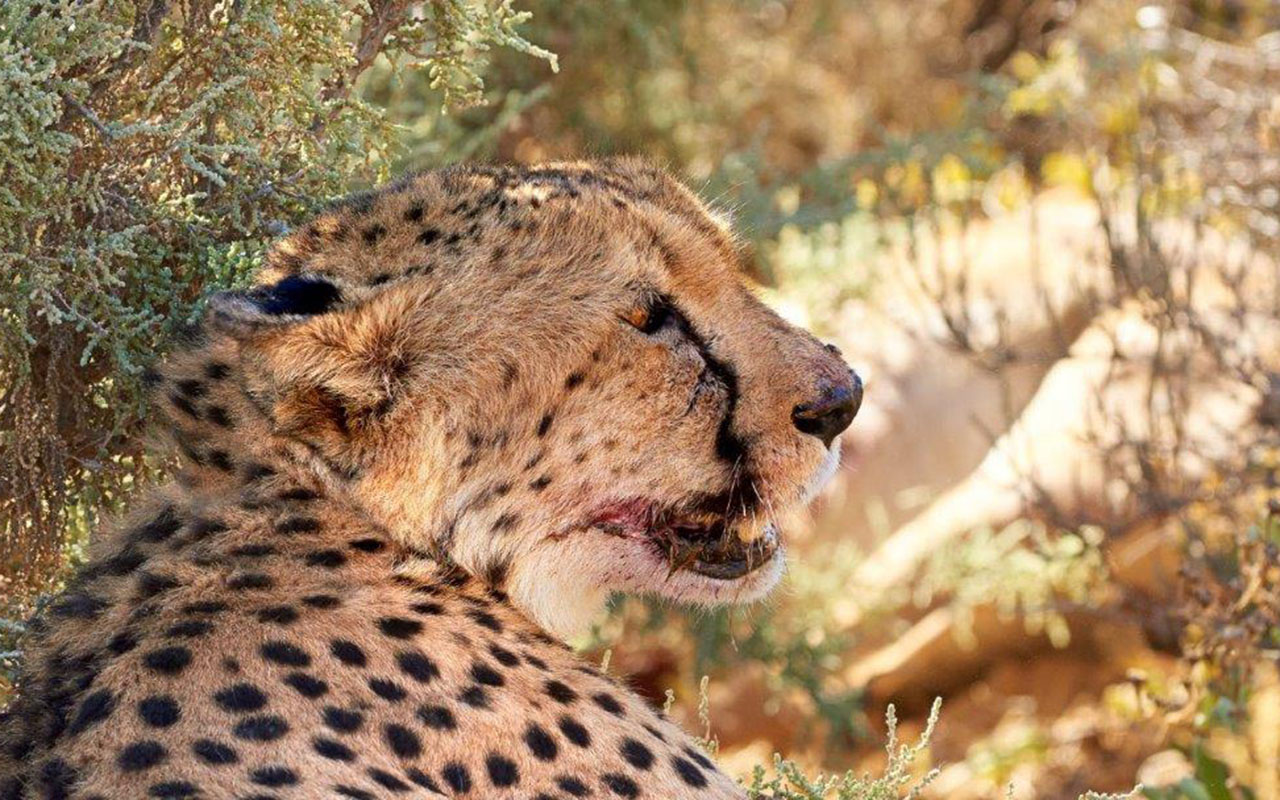Cheetah
.jpg)
| Kingdom -> | Animalia |
| Phylum -> | Chordata |
| Class -> | Mammalia |
| Order -> | Carnivora |
| Family -> | Felidae |
| Genus -> | Felinae |
| Species -> | F. Jubatus |
Cheetah is a large felid native to Africa and parts of Iran, belonging to the subfamily Felinae. It is the fastest land animal and is well-known for its exceptional agility and acceleration. The cheetah's unique adaptations make it a highly specialized and efficient predator, allowing it to reach speeds of up to 60 miles per hour (97 kilometers per hour) in just a few seconds.
Description and Anatomy
The cheetah is a slender and long-legged cat with a deep chest and a small, rounded head. Its coat is covered in a golden-yellow or pale-orange fur with solid black spots. These spots provide camouflage by breaking up the outline of its body, helping it blend in with its surroundings. The cheetah's face is characterized by its tear-streak markings, which run from the inner corners of its eyes down to the sides of its mouth. These markings are believed to help reduce glare from the sun and to direct scent from glands near the eyes to the nose.
Cheetahs have several adaptations that allow them to reach remarkable speeds. Their large nasal passages enable them to take in more oxygen during a sprint, while their enlarged adrenal glands produce adrenaline to boost their metabolism. Their non-retractable claws provide traction, and their long tails function as a rudder for balance during high-speed pursuits.
Distribution and Habitat
Cheetahs are primarily found in Africa, with a small population existing in Iran. They inhabit a variety of ecosystems, including grasslands, savannas, and semi-desert areas. Cheetahs prefer open habitats where they can easily spot and pursue their prey. Their range has significantly diminished over time due to habitat loss, human encroachment, and poaching.
Diet and Hunting Behavior
Cheetahs are carnivorous and primarily prey on small to medium-sized ungulates such as gazelles, impalas, and springboks. They may also consume smaller animals like hares, birds, and reptiles. Cheetahs rely on their speed and stealth to hunt, using their spotted coat to blend into the environment and stalking their prey before launching a high-speed chase. Their hunting success rate is relatively high, with about 40-60% of pursuits ending in a successful capture.
Reproduction and Lifespan
Cheetahs have a polygynous mating system, with males competing for access to females. After a gestation period of approximately 90-95 days, females give birth to a litter of 2-8 cubs. Cubs are born with a mantle of fur that runs along their backs, which is believed to provide camouflage and mimic the appearance of a honey badger, a notoriously aggressive animal. This mimicry may deter potential predators. Cubs stay with their mothers for around 18 months, learning essential hunting and survival skills.
Cheetahs have a relatively short lifespan in the wild, typically living 10-12 years. In captivity, they can live up to 17 years.
Conservation Status
The cheetah is classified as Vulnerable on the International Union for Conservation of Nature (IUCN) Red List, with populations declining due to habitat loss, poaching, and human-wildlife conflict. Conservation efforts are in place to protect cheetah populations, including habitat restoration, anti-poaching initiatives, and community-based conservation programs.
Frequently Asked Questions about the Cheetah
How fast are cheetahs?
What are the main physical features of the cheetah?
What type of habitat do cheetahs prefer?
How many cheetah are there in the Kruger Park?
What do cheetahs eat?
What kind of sounds do cheetahs make?
Is the cheetah a true cat?
Can cheetahs climb trees?
How fast can cheetahs run?
How far can cheetah run at top speed?
How is the prey of a cheetah caught and killed?
Are cheetahs often robbed of their kill?
Are cheetahs solitary animals?
Are cheetahs territorial?
Are cheetahs dangerous to man?
Is there a specific breeding season, and how long is the gestation period of a cheetah?

